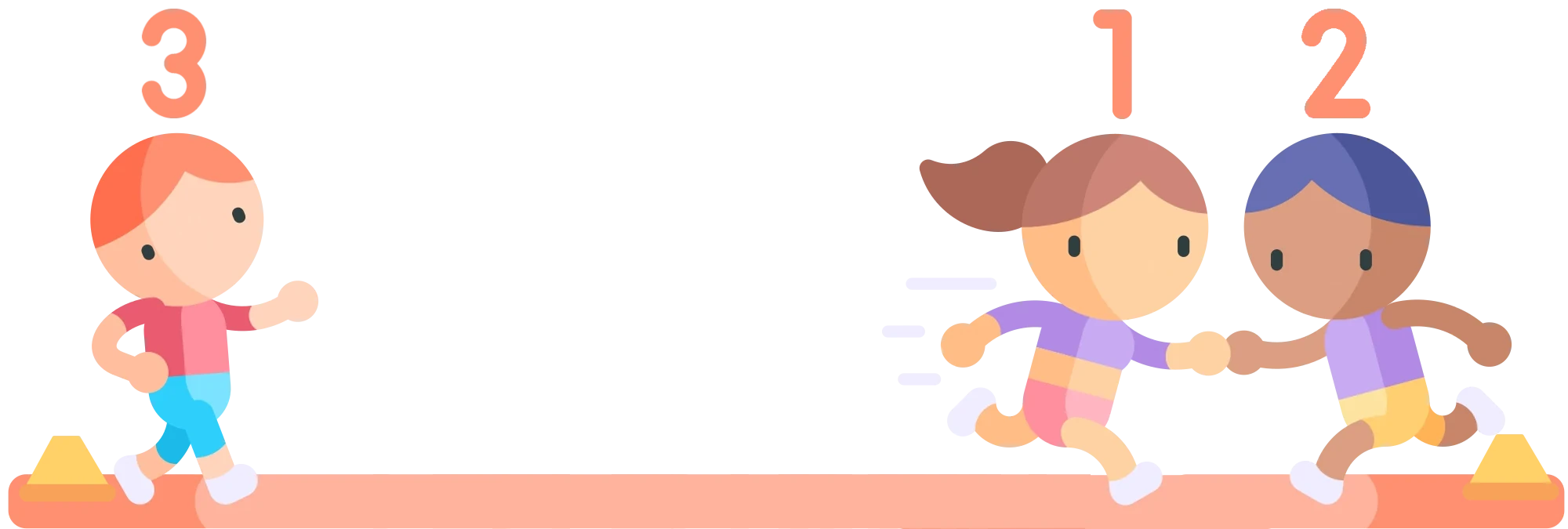
Three-person Continuous Relay
- Good for mixed-ability groups
- Great for speed and an element of competition
- Ideal for groups of 3–21 runners
- Works well in parks, on hills, and on the running track
A three-person continuous relay is a special case of a continuous relay in which each participant runs several times. They're good fun and and excellent way of introducing variety to a session and getting a bit of speed in everybody's legs.
Equipment
A few soccer cones to mark the changeover points. Natural markers such as trees and streetlights can also be used.

Setting Up
Find an area with a good surface (lump-free and good traction) and place two soccer cones 20–30 yards apart.
Split the runners into groups of three and assign each runner within each group a number from one to three.
In each group, runner number one stands next to one of the cones and runner number three stands behind runner number one. Runner number two stands opposite the other two runners by the other cone.
The Session
- Runner one runs to runner two and waits
- Runner two runs to runner three and waits
- Runner three runs to runner one and waits
This sequence is repeated ad libitum.

Each runner must wait for the other two runners to complete their cycle, meaning recovery times are approximately twice running time.
Since the relay legs tend to be run quickly with short recoveries it's best to limit running time to about 90 seconds and perform several sets with recoveries between each. These recovery periods are a great opportunity to discuss technique which can be put into practice on subsequent reps.
Rules
No jumping the gun (starting your relay leg before your teammate has reached you). It's best to agree on a changeover protocol in advance. A high five usually works best.
Group Size
A minimum of three runners is needed. And since each group needs three runners then the entire group size must be a multiple of three.
Space may limit how many different groups are possible, but generally up to seven groups of three runners is manageable.
Real World Example
There is a group of ten athletes and the session is taking place in a park.
The run leader sets down two cones 30 yards apart on an area of well-maintained grass.
Nine of the runners are sorted into three groups of three and the leftover runner acts as the judge.
Runners within each group are assigned numbers from one to three, get into position as described above, and are told they must run fast and relaxed while completing the relay
The teams run the relay for one minute and the judge identifies the runner who is running with most relaxation. This athlete now becomes the judge and the former judge takes their place in the team.
The athletes are taken through a high knees running drill and instructed to focus on a good knee lift during the next set. The judge picks out the athlete with the best knee lift and they swap roles.
A further five sets are completed and each time a new technical focus is established and the runner determined most-proficient by the judge becomes the judge for the following round.

- If you don't have a multiple of three runners you can pair runners of similar ability.
- This works really well at the end of another session as an add-on.

- Ensure good traction on wet or slippy days. The short nature of each relay leg means that runners tend to sprint and get tired quickly.
- Make sure there is room for athletes to decelerate after handing over. For example, don't position the changeover points next to a fence.
- Remember to warm up before your session and cool down afterwards. Accelerating and decelerating repeatedly over short distances can be demanding.